Complete Solutions to Level-II(C.W.) of chapter SYSTEM OF PARTICLES of Class 11 book with complete answers and questions
| Class 11 | PHYSICS |
| Chapter | SYSTEM OF PARTICLES |
| NARAYANA | Level-II(C.W.) |
| Number Of Questions | 64 |
| Academic Year | 2023-24 |
A uniform wire is bent into the form of a rectangle of length `L` and width `W`. The coordinates of its centre of mass from a corner are
View SolutionA uniform disc of radius R is put over another unifrom disc of radius 2R of the same thickness and density. The peripheries of the two discs touch each other. Locate the centre of mass of the system.
View SolutionThree particles each `1kg` mass are placed at the corners of a right angled triangle `AOB`, `O` being the origin of the co-ordinate system `OA` and `OB` along `+ve` x-direction and `+ve` y-direction. The position vector of the centre of mass is (`OA = OB=1m`) (in meters)
View SolutionThree particles of masses `1kg`, `2kg` and `3kg` are placed at the corners A, B and C respectively of an equilateral triangle ABC of edge `1m`. Find the distance of their centre of mass from A.
View SolutionSix identical particles each of mass `m` are arranged at the corners of a regular hexagon of side length `L`. If the mass of one of the particle is doubled, the shift in the centre of mass is
View SolutionA bomb of mass `m` at rest at the coordinate origin explodes into three equal pieces. At a certain instant one piece is on the x-axis at `x=40cm` and another is at `x=20cm, y=-60cm`. The position of the third piece is
View SolutionParticle of masses `m, 2m,3m,…,nm` grams are placed on the same line at distance `l,2l,3l,…..,nl cm` from a fixed point. The distance of centre of mass of the particles from the fixed point in centimeters is :
View SolutionThree particles each of mass `2kg` are at the corners of an equilateral triangle of side `sqrt 3 m`. If one of the particles is removed, the shift in the centre of mass is
View SolutionThe mass of a uniform ladder of length `5m` is `20kg`. A person of mass `60kg` stand on the ladder at a height of `2m` from the bottom. The position of centre of mass of the ladder and man from the bottom is
View SolutionA uniform thin rod of length `1m` and mass `3kg` is attached to a uniform thin circular disc of radius `30cm` and mass `1kg` at its centre perpendicular to its plane. The centre of mass of the combination from the centre of disc is
View SolutionFour identical particles each of mass `m` are arranged at the corners of a square of side length `l`. If the masses of the particles at the end of a side are doubled, the shift in the centre of mass of the system.
View SolutionA circular hole of radius `r` is made in a disk of radius `R` and of uniform thickness at a distance `a` from the centre of the disk. The distance of the new centre of mass from the original centre of mass is
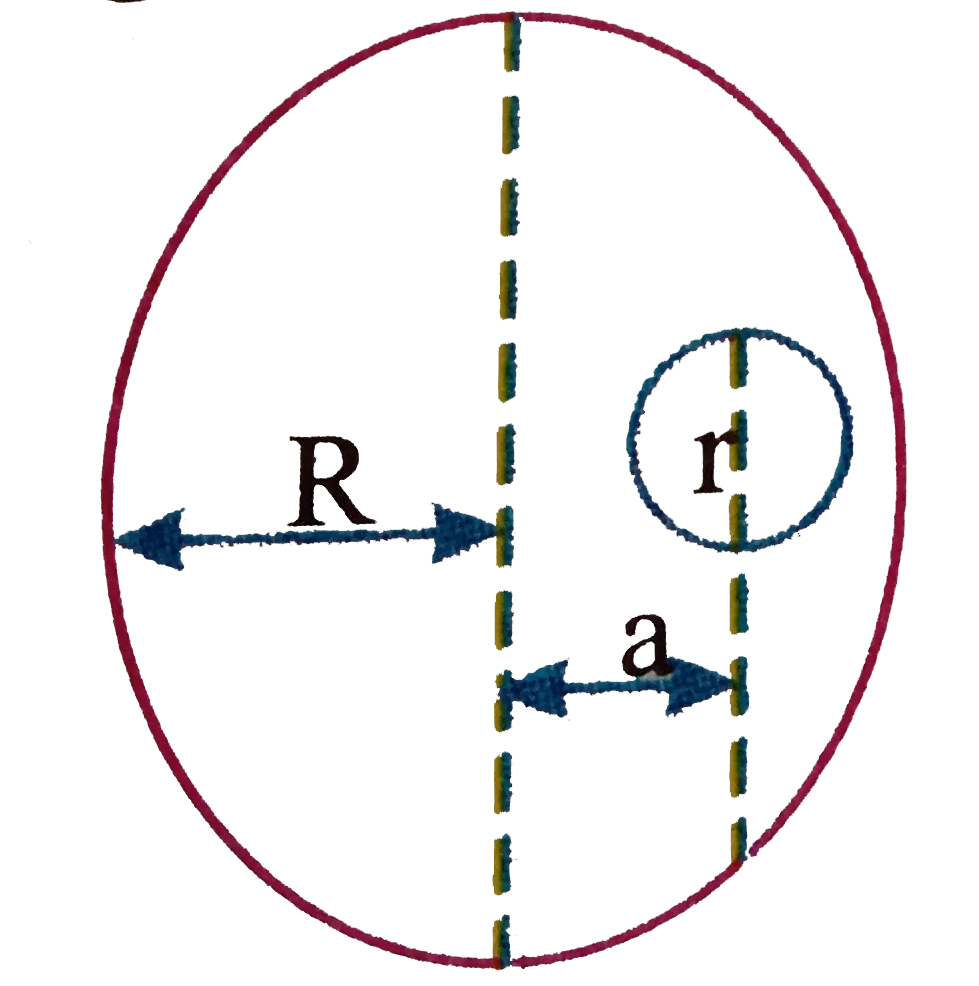
View SolutionThe centre of mass of the letter `F` which is cut from a uniform metal sheet from point `A` is
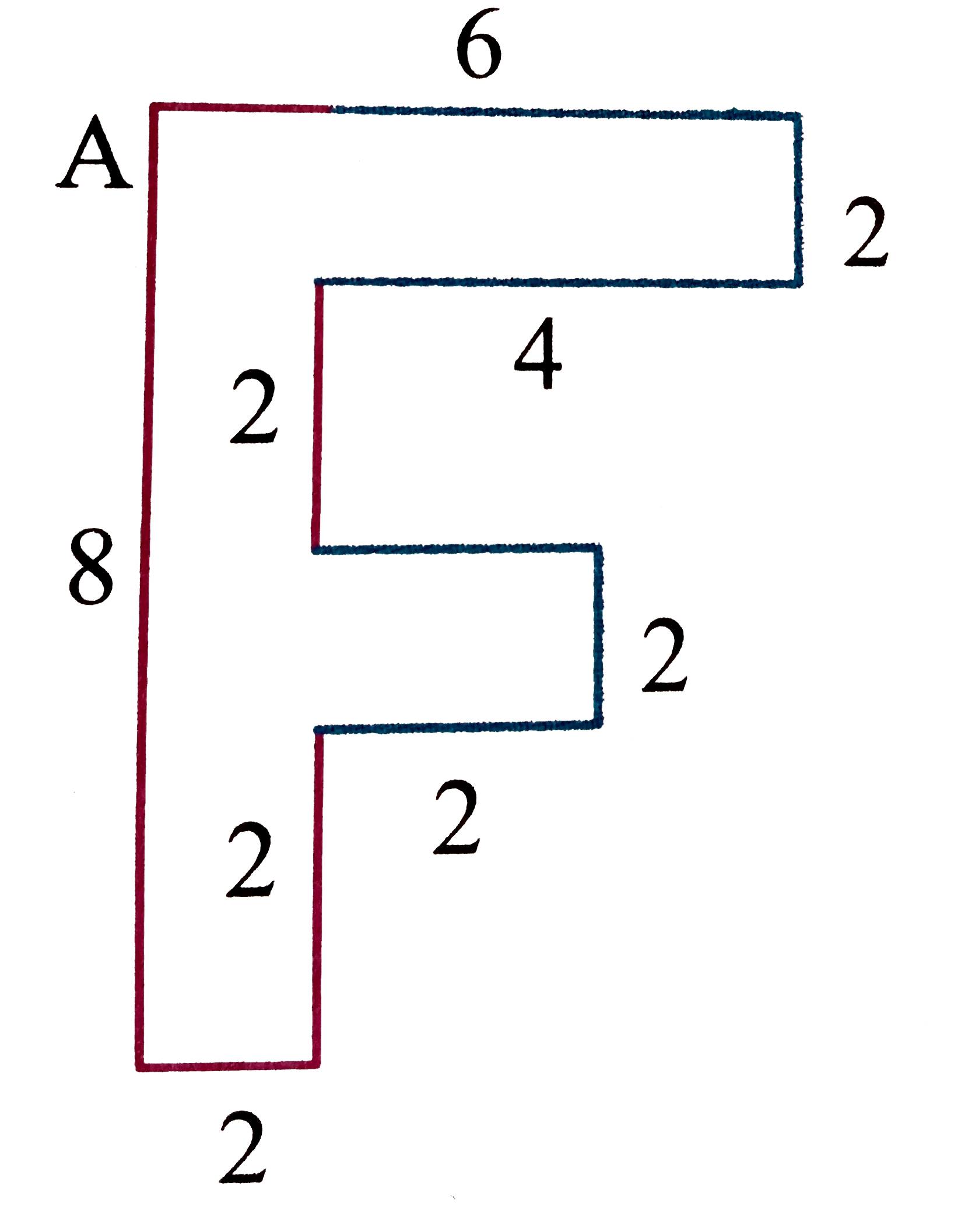
View SolutionTwo identical thin uniform rods of length `L` each are joined to form `T` shape as shown in the figure. The distance of centre of mass from `D` is
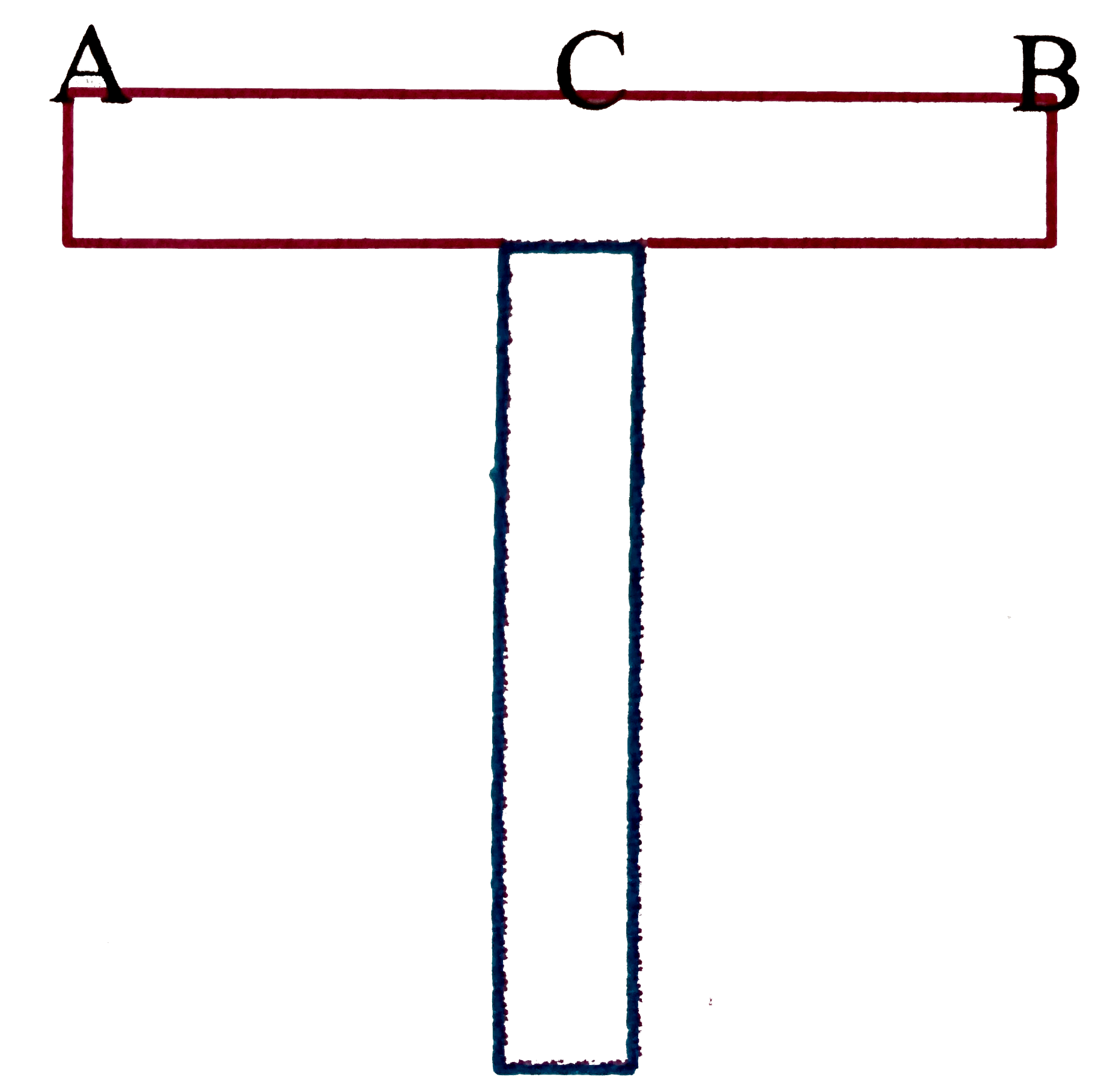
View SolutionFigure shows a square plate of uniform thickness and side length `sqrt 2 m`. One fourth of the plate is removed as indicated. The distance of centre of mass of the remaining portion from the centre of the original square plate is
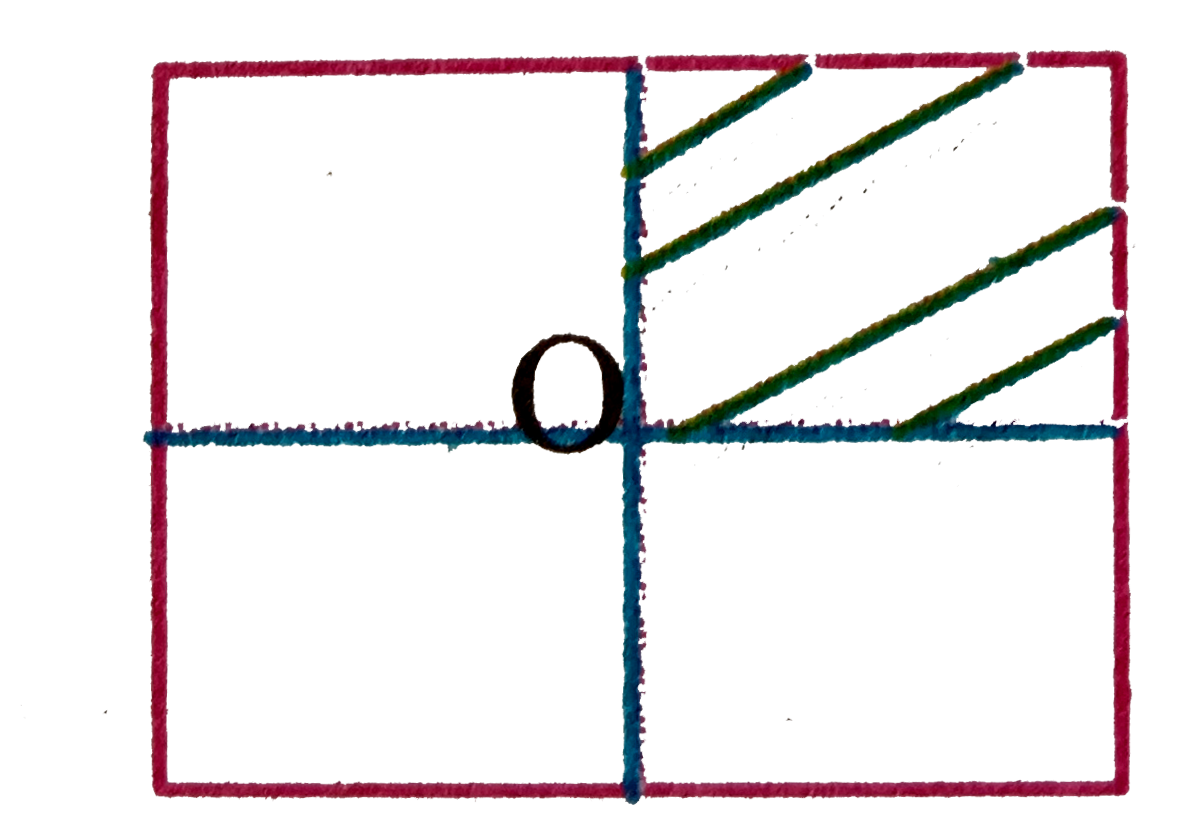
View SolutionTwo particles of equal masses have velocities `vec v_1 = 4 hat i` and `vec v_2 = 4 hat j`. First particle has an acceleration `vec a_1 = (5 hat i + 5 hat j) ms^(-2)` while the acceleration of the other particle is zero. The centre of mass of the two particles moves in a path of
View SolutionTwo particles of masses `p` and `q (p gt q)` are separated by a distance `d`. The shift in the centre of mass when the two particles are interchanged is
View SolutionThe unit vector perpendicular to `vec A = 2 hat i + 3 hat j + hat k` and ` vec B = hat i - hat j + hat k` is
View SolutionAn electron is moving with speed `2xx10^5 m//s` along the positive x-direction in the presence of magnetic induction `vecB = (hat i + 4 hat j - 3 hat k) T`. The magnitude of the force experienced by the electron in `N ( e = 1.6xx 10^(-19) C) ( vec F = q ( vec v xx vec B))`
View SolutionA particle of mass `80` units is moving with a uniform speed `v=4 sqrt 2` units in `XY` plane, along a line `y=x+5`. The magnitude of the angular momentum of the particle about the origin is
View SolutionThe linear and angular velocities of a body in rotatory motion are `3 ms^(-1)` and `6 rad//s` respectively. If the linear acceleration is `6 m//s^2` then its angular acceleration in `rad s^(-2)` is
View SolutionA stationary wheel starts rotating about its own axis at uniform rate amgular acceleration `8rad//s^(2)`.The time taken by its to complete `77` rotation is
View SolutionA circular disc is rotating about its own axis at constant angular acceleration. If its angular velocity increases from 210 rpm to 420 rpm during `21` rotations then the angular acceleration of disc is
View SolutionA circular disc is rotating about its own axis at a uniform angular velocity `omega`. The disc is subjected to uniform angular retardation by which its angular velocity is decreased to `omega/2` during `120` rotations. The number of rotations further made by it before coming to rest is
View SolutionAverage torque on a projectile of mass `m` (initial speed `u` and angle of projection `theta`) between initial and final positions `P` and `Q` as shown in figure, about the point of projection is :
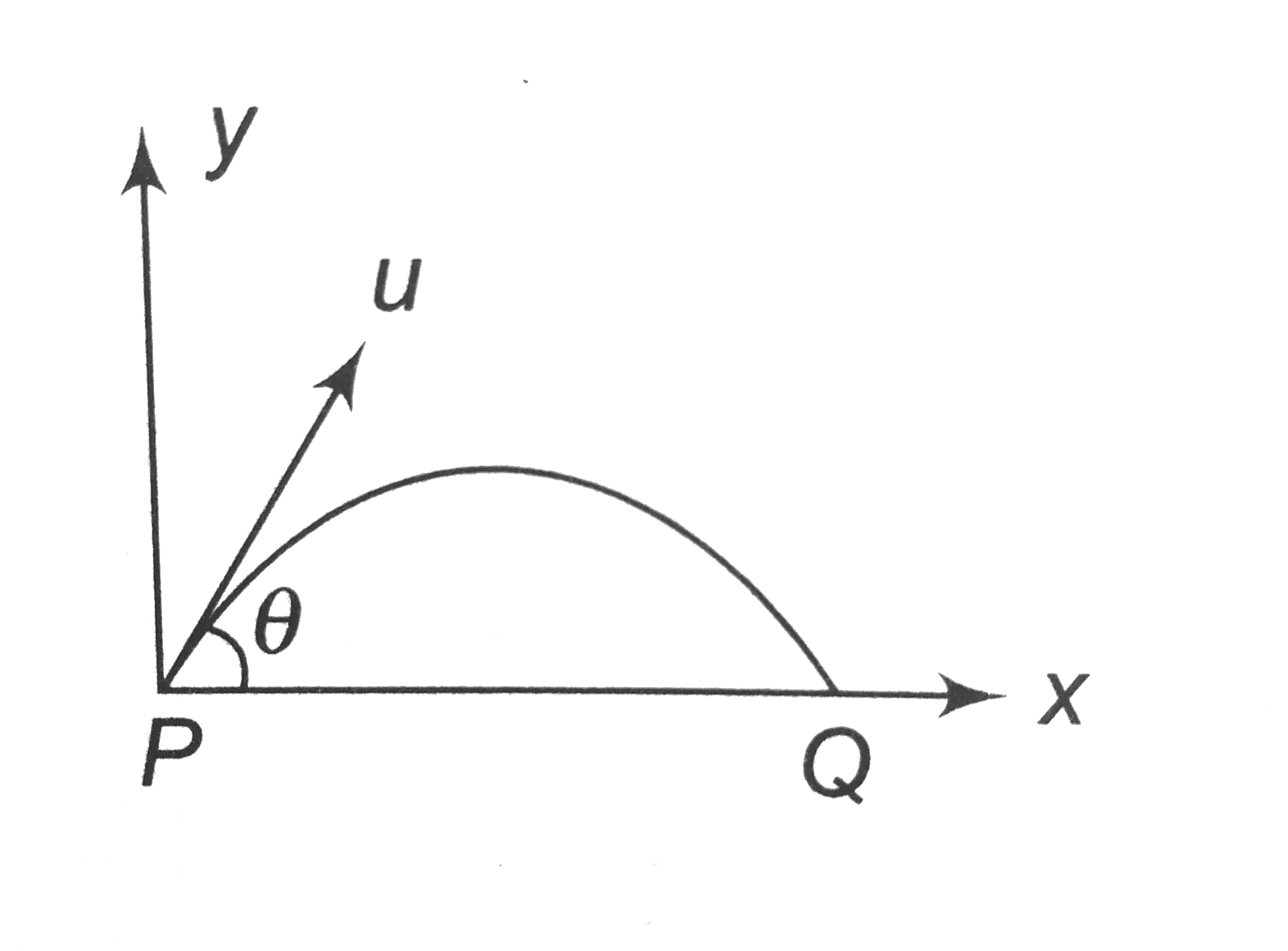 .
.
View SolutionA metal rod of uniform thickness and of length `1m` is suspended at its `25cm` division with help of a string. The rod remains horizontally straight when a block of mass `2kg` is suspended to the rod at its `10cm` division. The mass of rod is
View SolutionA metallic rod of mass `20kg` and of uniform thickness rests against a wall while the lower end of rod is in contact with rough floor. The rod makes an angle `60^@` with floor. If the weight of rod produces a torque `150Nm` about its lower end, the length of rod (`g=10 ms^(-2)`)
View SolutionA roller of mass `300kg` and of radius `50cm` lying on horizontal floor is resting against a step of height `20cm`. The minimum horizontal force to be applied on the roller passing through its centre to turn the roller on to the step is
View SolutionA thin rod of mass `M` and length `L` is bent into a circular ring. The expression for moment of inertia of ring about an axis passing through its diameter is
View SolutionTwo identical circular plates each of mass `0.1 kg` and radius `10cm` are joined side by side as shown in figure. Their moment of inertia about an axis passing through their common tangent is
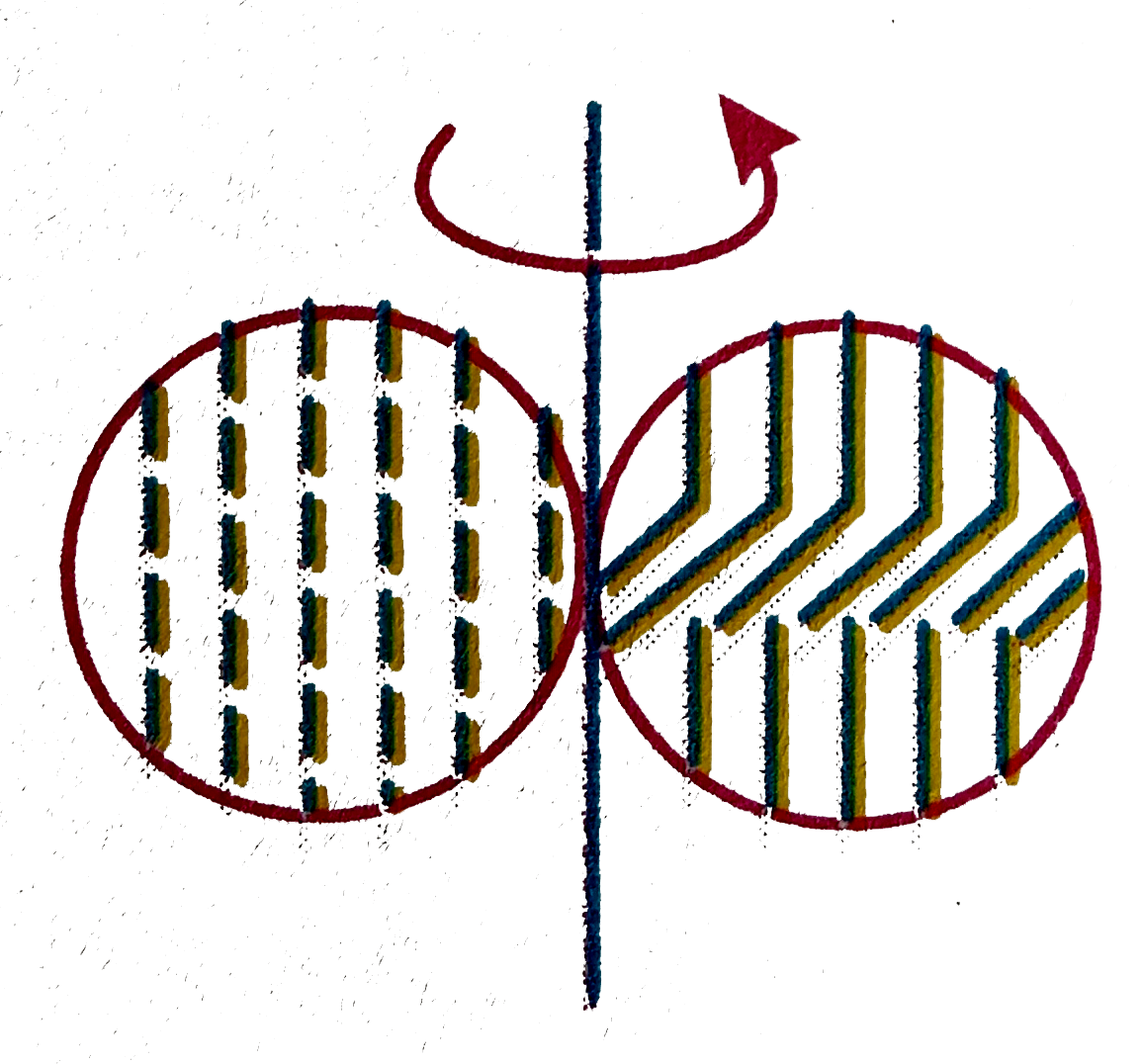
View SolutionA wheel starting from rest is uniformly accelerate at `4rad/s^2` for 10 seconds. It is allowed to rotate uniformly for the next 10 seconds and is finally brought to rest in the next 10 seconds. Find the total angle rotated by the wheel.
View SolutionTwo spheres each of mass `M` and radius `R//2` are connected at their centres with a mass less rod of length `2 R`. What will be the moment of inertia of the system about an axis passing through the centre of one of the sphere and perpendicular to the rod ?
View SolutionMoment of inertia of a thin circular plate of mass `M`, radius `R` about an axis passing through its diameter is `I`. The moment of inertia of a circular ring of mass `M`, radius `R` about an axis perpendicular to its plane and passing through its centre is
View SolutionThe mass of a thin circular plate is `M` and its radius is `R`. About an axis in the plane of plate at a perpendicular distance `R//2` from centre of plate, its moment of inertia is
View SolutionIn a rectangle `ABCD (BC = 2AB)`. The moment of inertia is maximum along axis through
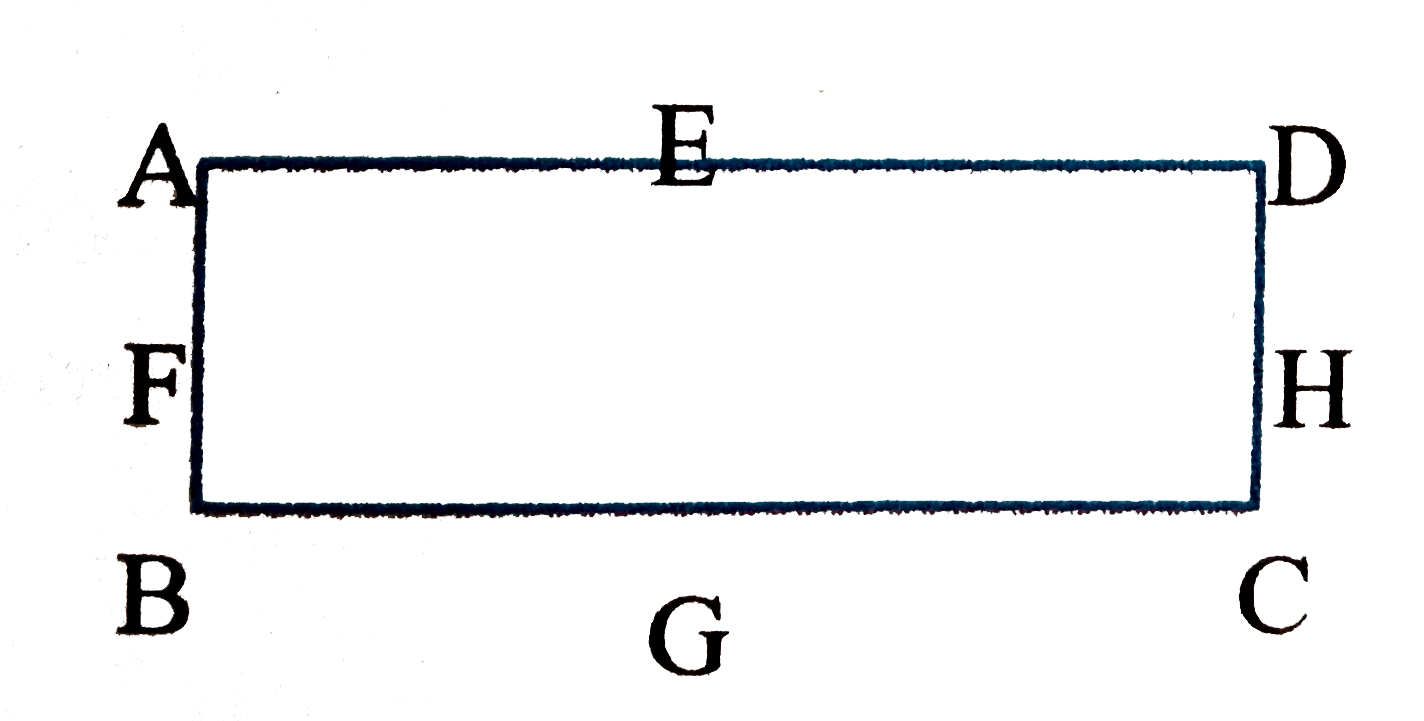
View Solution`M` is mass and `R` is radius of a circular ring. The moment of inertia of same ring about an axis in the plane of ring at a perpendicular distance `2R/3` from centre of ring is
View Solution`I` is moment of inertia of a thin circular plate about its natural axis. The moment of inertia of a circular ring whose mass is half of mass of plate but radius is twice the radius of plate about an axis passing through any tangent of ring in its plane is
View SolutionThe moment of inertia of a uniform rod of length `2l` and mass `m` about an axis `xy` passing through its centre and inclined at an angle `alpha` is
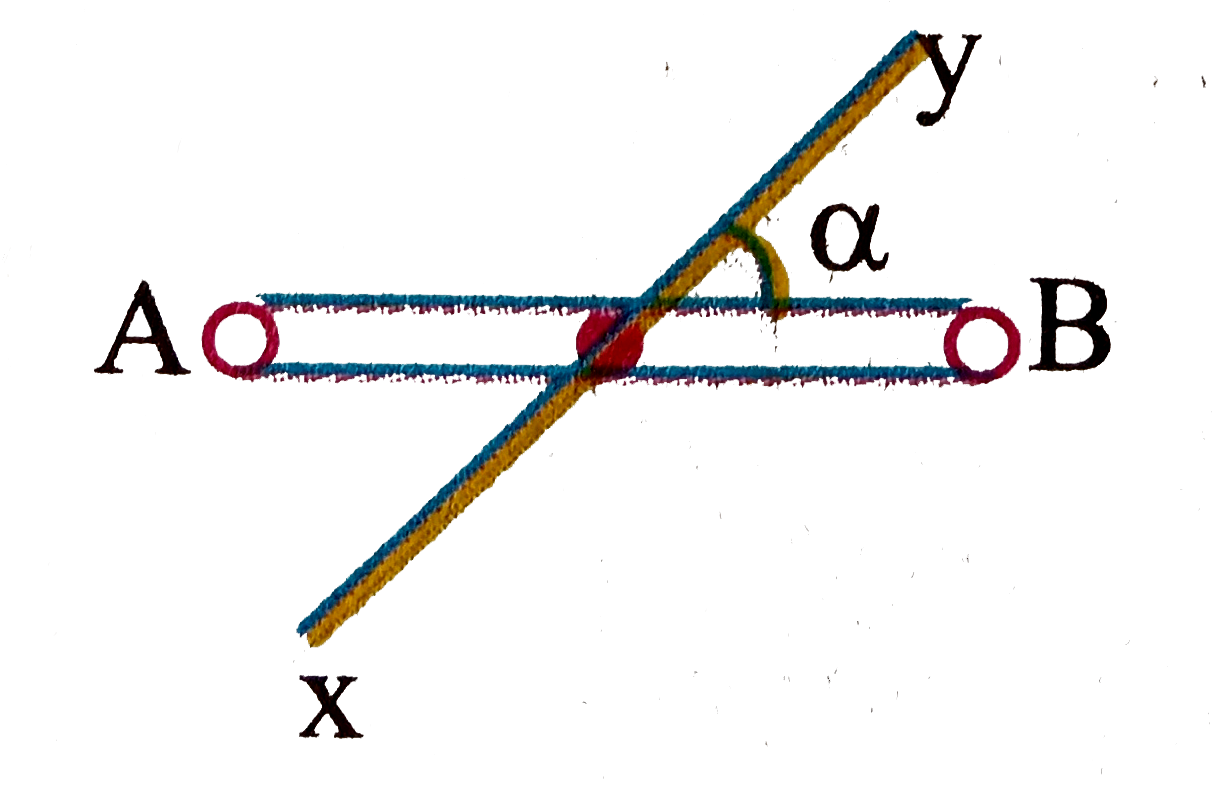
View SolutionThe ratio of radii of two solid spheres of same material is `1:2`. The ratio of moments of inertia of smaller and larger spheres about axes passing through their centres is
View Solution`I` is moment of inertia of a thin circular ring about an axis perpendicular to the plane of ring and passing through its centre. The same ring is folded into `2` turns coil. The moment of inertia of circular coil about an axis perpendicular to the plane of coil and passing through its centre is
View SolutionA metallic thin wire has uniform thickness. From this wire, two circular loops of radii `r`, `2r` are made. If moment of inertia of `2^(nd)` loop about its natural axis is `n` times moment of inertia of `1st` loop about its natural axis. The value of `n` is
View SolutionA uniform cylinder has radius `R` and length `L`. If the moment of inertia of this cylinder about an axis passing through its centre and normal to its circular face is `(mR^(2))/2` is equal to moment of inertia of the same cylinder about an axis passing through its centre and normal to its length, then
View SolutionThe moment of inertia of a solid cylinder about its natural axis is `I`. If its moment of inertia about an axis `bot^r` to natural axis of cylinder and passing through one end of cylinder is `191//6` then the ratio of radius of cylinder and its length is
View SolutionTwo identical circular plates each of mass `M` and radius `R` are attached to each other with their planes `bot^r` to each other. The moment of inertia of system about an axis passing through their centres and the point of contact is
View SolutionThe radius of gyration of rod of length `L` and mass `M` about an axis perpendicular to its length and passing through a point at a distance `L//3` from one of its ends is
View SolutionTwo point size bodies of masses `2kg, 3kg` are fixed at two ends of a light rod of length `1m`. The moment of inertia of two bodies about an axis perpendicular to the length of rod and passing through centre of mass of two bodies is
View SolutionThree rings, each of mass `m` and radius `r`, are so placed that they touch each other. Find the moment of inertia about the axis as shown in Fig.
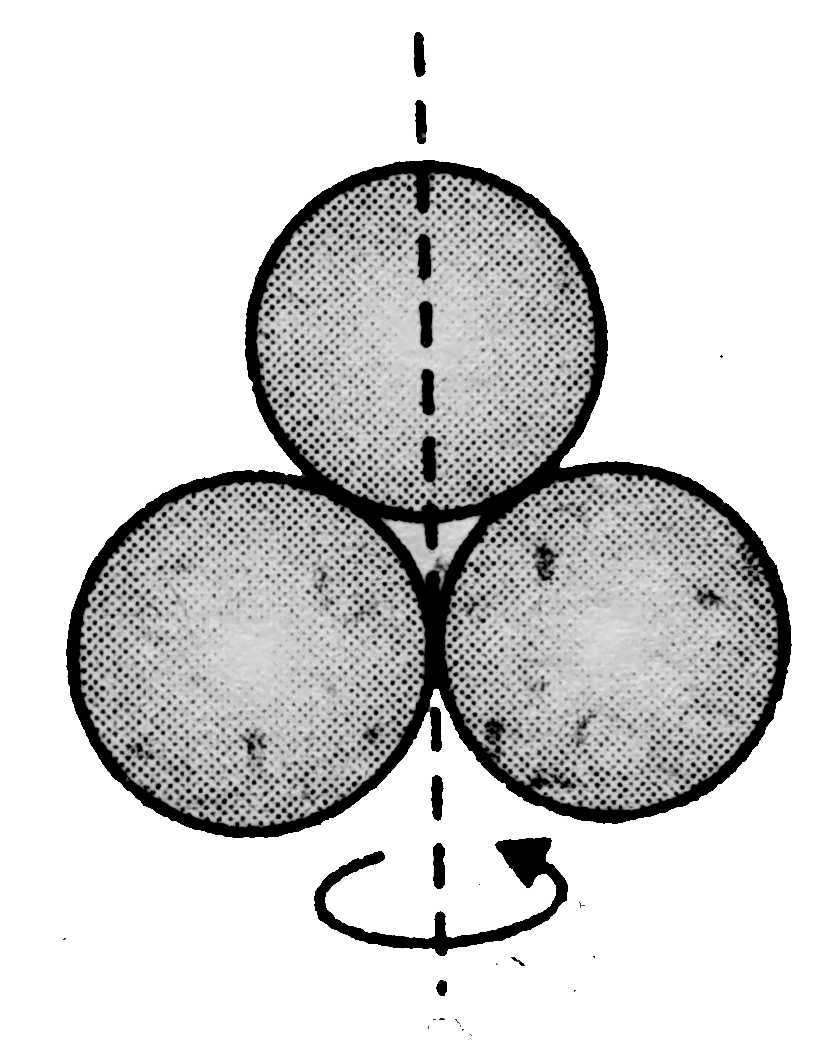
View SolutionThree point sized bodies each of mass `M` are fixed at three corners of light triangular frame of side length `L`. About an axis perpendicular to the plane of frame and passing through a corner of frame the moment of inertia of three bodies is
View SolutionA thin uniform circular disc of mass M and radius R is rotating in a horizontal plane about an axis passing through its centre and perpendicular to its plane with an angular velocity `omega.` another disc of the same dimensions but of mass M/4 is placed gently on the first disc coaxially. The angular velocity of the system now is `2 omega //sqrt5.`
View SolutionA turn table is rotating in horizontal plane about its own axis at an angular velocity `90rpm` while a person is on the turn table at its edge. If he gently walks to the centre of table by which moment of inertia of system decreases by `25%`, then the time period of rotating of turn table is
View SolutionA uniform cylindrical rod of mass `m` and length `L` is rotating with an angular velocity `omega`. The axis of rotation is perpendicular to its axis of symmetry and passes through one of its edge faces. If the room temperature increases by `t` and the coefficient of linear expansion is `alpha`, the change in its angular velocity is
View SolutionA constant torque of `1000 N-m` turns a wheel of moment of inertia `200 kg-m^2` about an axis through its centre. Its angular velocity after `3` seconds is.
View SolutionAn energy of `484 J` is spent in increasing the speed of a flywheel from 60 rpm to 360 rpm. Calculate moment of inertia of flywheel.
View SolutionThe angular frequency of a fan of moment of inertia `0.1kgm^2` is increased from 30rpm to 60rpm when a torque of `0.03Nm` acts on it. The number of revolutions made by the fan while the angular frequency is increased from 30rpm to 60rpm
View SolutionA wheel rotating at an angular speed of 20 rad/s ils brought to rest by a constant trouque in 4.0 secons. If the moiment of inertia of the wheel about the axis of rotation is 0.20 `kg-m^2` find the work done by the torque in the first two seconds.
View SolutionA sphere of mass `m` and radius `r` rolls on a horizontal plane without slipping with a speed `u`. Now it rolls up vertically, then maximum height it would be attain will be
View SolutionA circular ring starts rolling down on an inclined plane from its top. Let `v` be velocity of its centre of mass on reaching the bottom of inclined plane. If a block starts sliding down on an identical inclined plane but smooth, from its top, then the velocity of block on reaching the bottom of inclined plane is
View SolutionA thin rod of length `L` is vertically straight on horizontal floor. This rod falls freely to one side without slipping of its bottom. The linear velocity of centre of rod when its top end touches floor is
View SolutionA wheel of radius `R` rolls without slipping on the horizontal surface with speed `v_(0)`. When the contact point is `P` on the road, a small patch of mud separates from the wheel at its highest point strikes the road at point `Q`. Find distance `PQ`.
View SolutionA solid cylinder of mass `m` rolls without slipping down an inclined plane making an angle `theta` with the horizontal. The frictional force between the cylinder and the incline is
View SolutionA thin metal disc of radius `0.25m` and mass `2kg` starts from rest and rolls down an inclined plane. If its rotational kinetic energy is `4J` at the foot of the inclined plane, then its linear velocity at the same point is
View Solution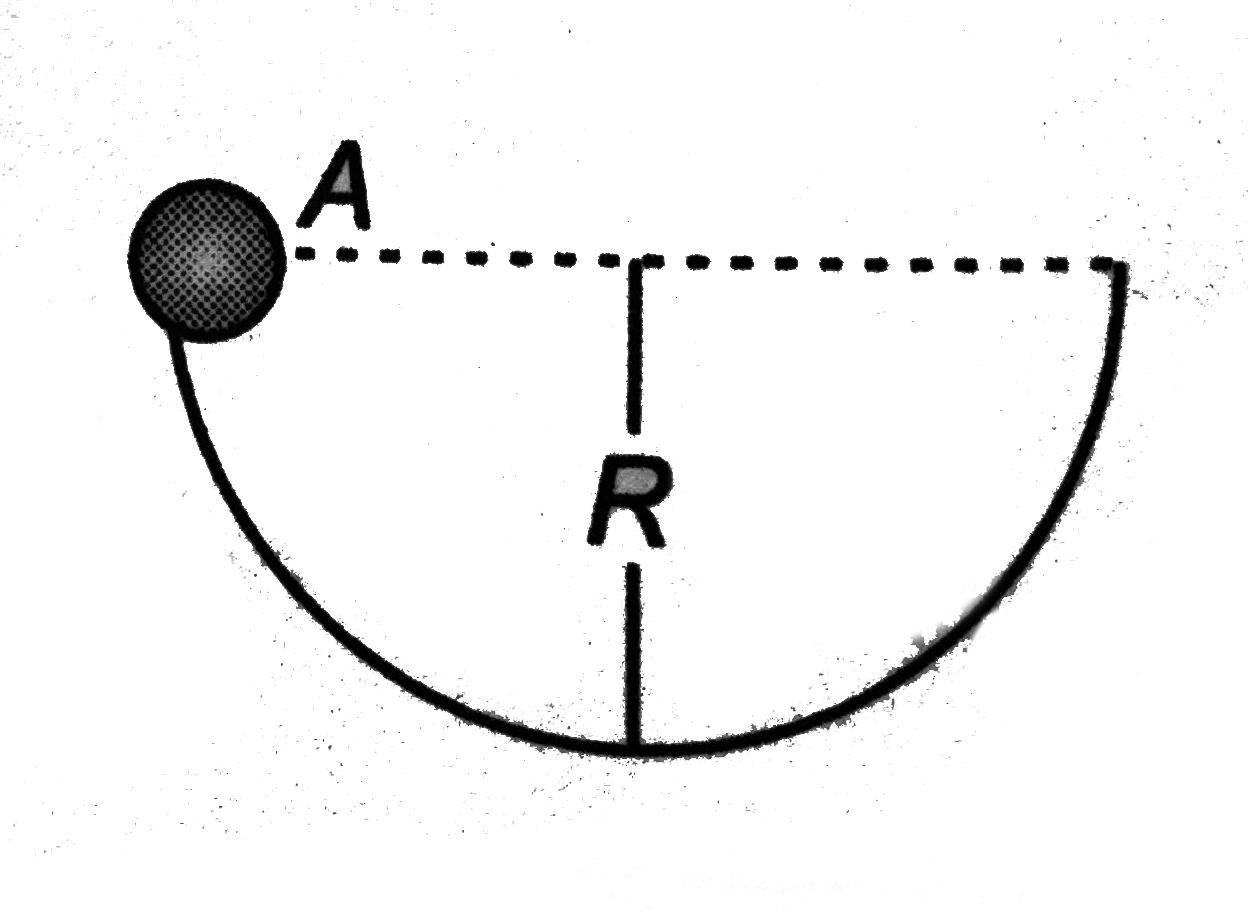
A small solid cylinder of radius `r` is released coaxially from point A inside the fixed large cylindrical bawl of radius R as shown in figure. If the friction between the small and the large cylinder is sufficient enough to prevent any slipping then find.
(a). What fractions of the total energy are translational and rotational when the small cylinder reaches the bottom of the larger one?
(b). The normal force exerted by the small cylinder on the larger one when it is at the bottom.
View SolutionA metal disc of radius `R` and mass `M` freely rolls down from the top of an inclined plane of height `h` without slipping. The speed of its centre of mass on reaching the bottom of the inclined plane is
View SolutionA thin rod of length `L` is vertically straight on horizontal floor. This rod falls freely to one side without slipping of its bottom. The linear velocity of centre of rod when its top end touches floor is
View Solution
Level-II(C.W.) questions and complete solutions for chapter SYSTEM OF PARTICLES of NARAYANA PHYSICS (HINGLISH) of Class 11